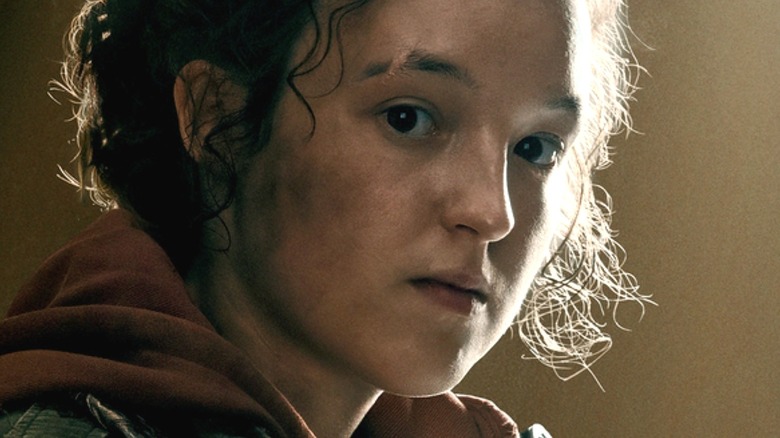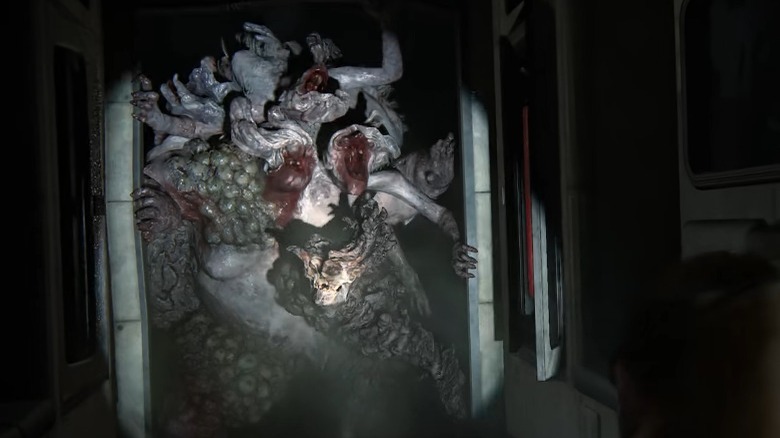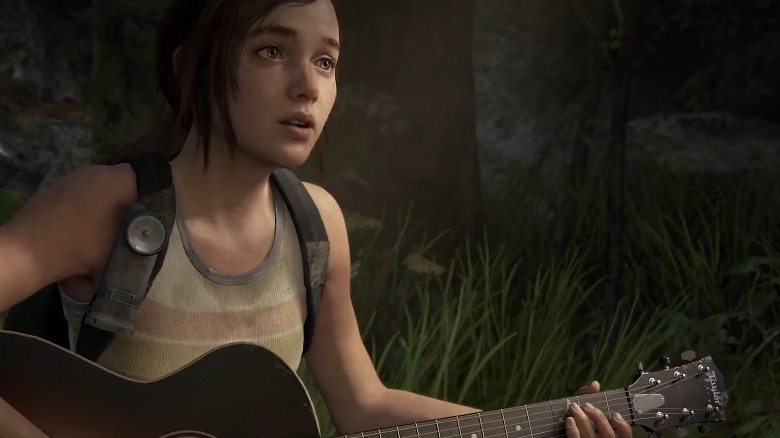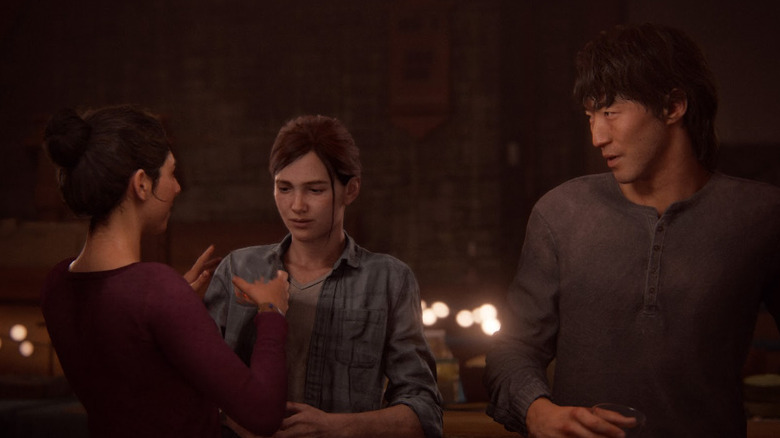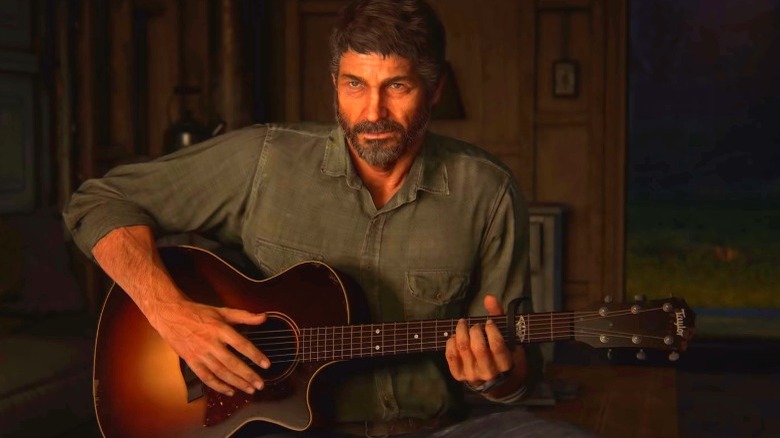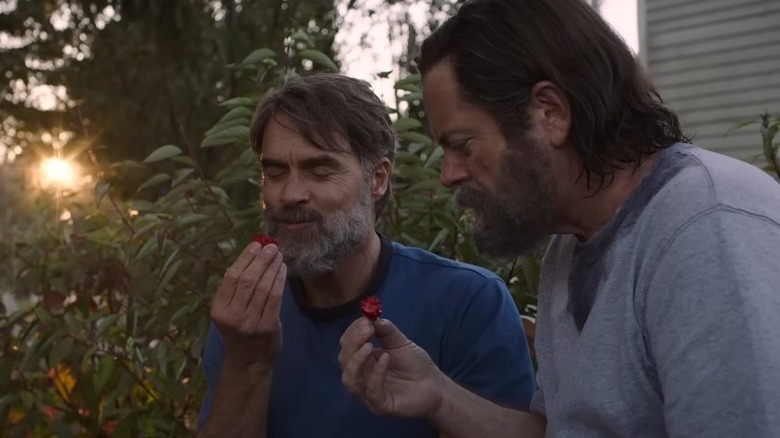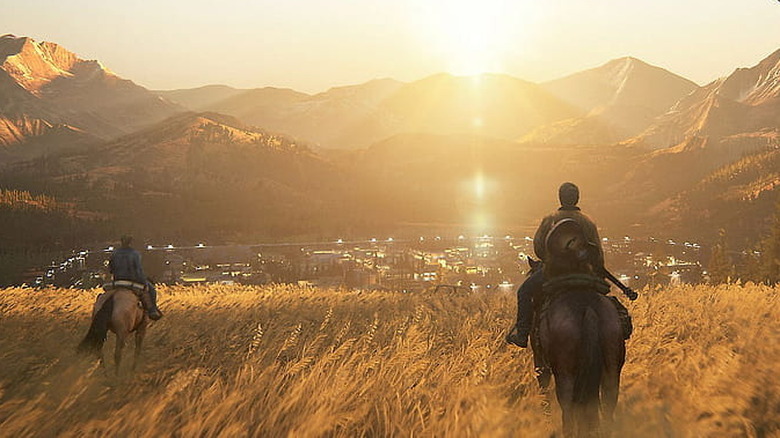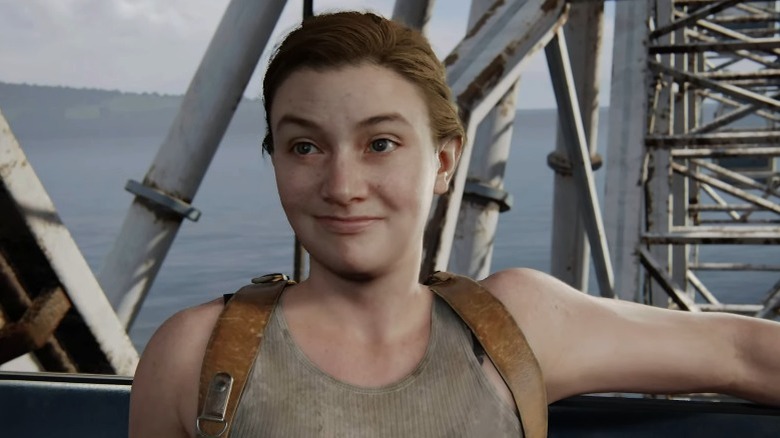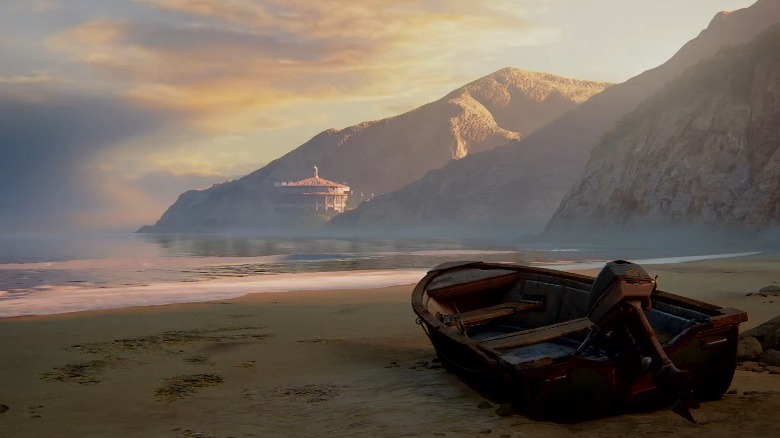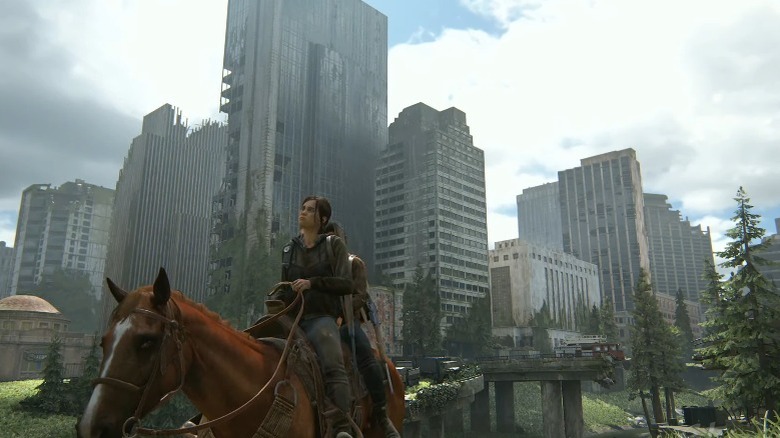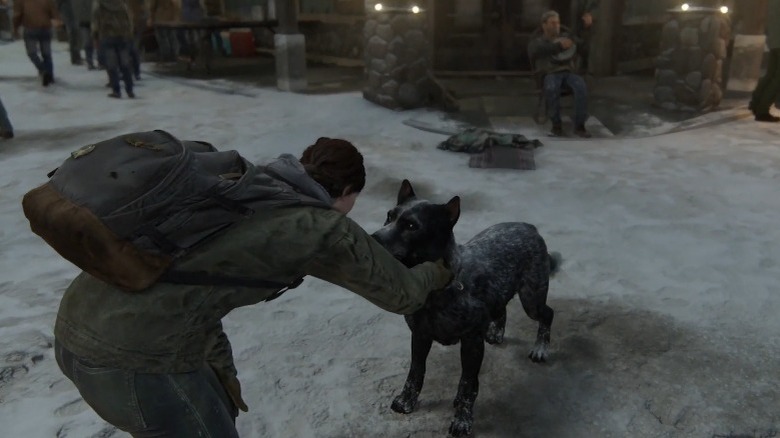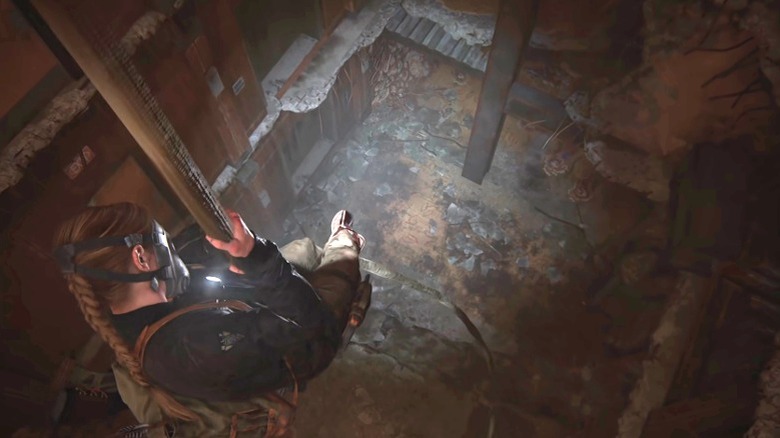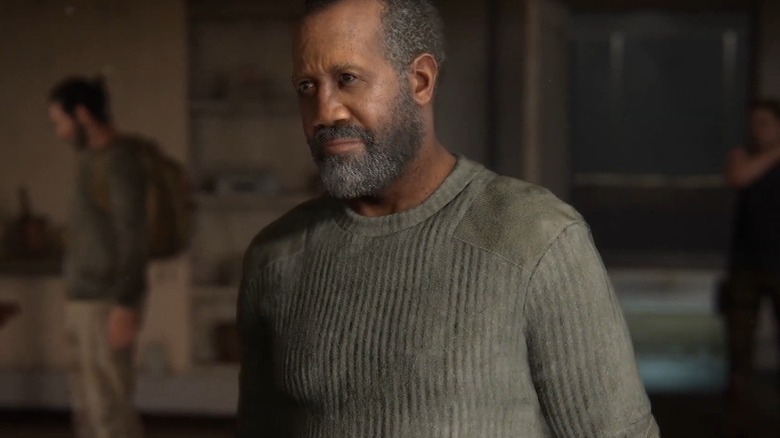The Last Of Us: 6 Things We Want To See In Season 2 (And 6 We Don't)
This article contains spoilers for "The Last of Us" television series and video games
The first season of HBO's "The Last of Us" was a stunning success. Of course, creating a great TV show is a bit easier when the source material is one of the best video games of all time. The first season had its shortcomings, but on the whole it delighted fans by being faithful to the game and introduced a whole new audience to Naughty Dog's hit franchise.
Gamers know what the future holds for HBO's show. The second game, from its brutal inciting incident to its shocking and divisive ending, takes on an even darker tone than the original. There's plenty of emotional moments, vicious violence, and fungal creatures to come before the adaptation wraps up. But now that the show's creators have confirmed their adaptation of "Part 2" will take place over multiple seasons, even longtime fans of the series wonder what we'll actually get to see in Season 2.
It's all but guaranteed that the next season will address the biggest unanswered questions from Season 1, but it might not follow the exact same path as the game. The show has a rare opportunity to improve upon an already near-perfect story. Our hopes are high, and here's exactly what we do and don't want to see in "The Last of Us" Season 2.
DO: Bring on the infected
"The Last of Us" may not technically count as a zombie apocalypse story, but it has all the trappings of the genre. There's a terrible infection that primarily spreads through bites, and society has collapsed under the pressure of so many monstrous creatures overrunning the places where human beings used to live. Like many modern day zombie stories, "The Last of Us" also emphasizes the idea that, when the world comes apart, the remaining humans can be even more threatening than the monsters that ruined the world.
The first game in the series went to great lengths to distinguish itself from a typical zombie game. The infected in "The Last of Us" all have unique properties based on how long the cordyceps fungus has been growing in a particular person, and coming across a bloater or a clicker in the game was a truly terrifying experience. Unfortunately the first season of the show let the franchise's infected creatures fall into the background, to the point where it was easy to forget about them entirely.
Season 2 has an opportunity to put the focus back on the infected and really make it clear why the apocalypse in "The Last of Us" is so different from any other. Since it's adapting the second game in the series, there's also a chance to introduce all new creatures, including shamblers and the nightmarish Rat King. Hopefully Season 2 will remind viewers why the infected are worth fearing.
DON'T: Too many flashbacks
"The Last of Us" told a linear story. The game starts at Joel's home before the apocalypse breaks out, then jumps ahead 20 years and follows his path in a straight line from that point on. The second game broke out of that formula and frequently cut away from the main action to insert a flashback that helped give context to certain character relationships or more fully explain parts of the story that had already paid off.
In some ways, that storytelling strategy paid off by forcing players to suddenly see Ellie's actions throughout the game in a new light. On the other hand, holding back key information also prevents players from being completely invested in what they're doing in their first playthrough. For example, from the outset it's that Joel and Ellie have a much more strained relationship than they did in the first game. Even though we can infer what might have happened between them, we don't actually get to know the full story until the very end of the game. Is that feeling of dramatic re-contexualization worth it?
Maybe season 2 shouldn't abandon the flashback storytelling method entirely, but it may want to front-load some of the more important moments so viewers can get properly invested in the events of the game. Hopefully we won't have to wait until the halfway point or beyond to know what's going on between Ellie and Joel after the events of the first game.
DO: Give us plenty of Dina and Jesse
The real focus of "The Last of Us" has always been the characters. Season 1 introduced us to a ton of memorable figures like Henry, Sam, Bill, Frank, and David — and all of them are dead now. Luckily, the second game provides some new and compelling characters for the show to introduce.
Season 2 will undoubtedly take a closer look at the lives of the people in Jackson, where Ellie and Joel make their home after the events of the first game. That means we're definitely going to see people like Dina and Jesse, and the show has a chance to expand on their stories the way it did with so many characters from the first game.
In "The Last of Us Part 2," Dina and Jesse both have pretty significant roles to play. The two of them were in a long-term relationship before the start of the game, but then Dina becomes Ellie's main love interest after the former and Jesse break up. Jesse is still a fiercely loyal friend to both of them, even saving Ellie's life when she's up against a wall in Seattle. Because the second game has so much story to tell, we don't get to spend nearly enough time with Dina and Jessi before some of the plot's most dramatic moments. That's why it would be great to see Season 2 spend way more time developing their characters and selling the importance of their relationship before the plot shifts into high gear.
DON'T: Too much downtime
"The Last of Us Part 2" opens with Joel and Ellie returning to Jackson, but it pretty quickly jumps forward about five years. From there the story wastes no time getting underway, and the plot more or less moves at full speed for the rest of the game. When it comes to creating a second season of the TV show, some fans have argued there's an opportunity to explore everything that happened in the years the game skipped over.
The Last of Us season 2 should not tell the story of Part II.
by
u/8BitBarista in
thelastofus
There could be some upsides to the show slowing down and entering territory that the games avoided, sure. Mainly, we'd get quite a bit more time with Pedro Pascal than we otherwise might. As nice as that would be, though, it could be a mistake for the season as a whole. Stories thrive on conflict, and as grim as "Part 2" is, the game gets right into the heart of the story that really drives the characters forward. Anything more than an episode dedicated to Joel and Ellie living the quiet life in Jackson could hold back the plot, without adding anything all that significant to the overall story.
No one is looking forward to the inciting incident of "Part 2," but it needs to happen. When Season 2 arrives, let's get the show on the road.
DO: More great standalone episodes
Season 1 of "The Last of Us" made some bold choices with its adaptation of the game. In addition to making lore changes to the cordyceps infection, the show also spent time exploring characters who were basically footnotes in the source material. Almost the entire third episode of the season was dedicated to Bill and Frank, a couple who met each other, fell in love, and lived long, fulfilling lives after the apocalypse. The show transformed what could have been an unwelcome distraction from the main plot into a well-told story that's been celebrated as one of the best episodes of TV ever made.
In Season 2, "The Last of Us" has a real shot at leveling up from that initial success. Anyone who's played the second game knows that there's a healthy supply of side characters who all have fascinating stories to tell. Taking the time to explore one or two side characters with the same care that was given to Frank and Bill could deepen our understanding of the world, increase the emotional impact of the show, and even make some of the main plot's biggest moments hit so much harder.
DON'T: Wasting a ton of time on traveling
Both games in the "Last of Us" franchise see their main characters traveling across the country to reach their goals. From a gameplay perspective, "Part 2" leans into travel and exploration even more heavily than the original by giving players an open world section of Seattle to peruse at their own pace. That's actually something we don't want to see too much of in Season 2 of the show.
The first game — and by extension, the first season — is a road trip story. It's all about the relationship that develops between Joel and Ellie as they make their journey together. Though it includes some travel by necessity, "Part 2" is exactly the opposite. That game's story is much more about the brutal actions that two people take in the apocalypse and their personal justifications for doing what they do.
While Season 2 is going to have plenty of opportunities to stop and smell the roses along the road, that might actually be an unnecessary distraction from the story it's trying to tell. "Part 2" smartly chose to skip over Ellie and Dina's trip to Seattle and their return trip home. When the show lands on HBO, it should do the same, and it may want to trim any random city exploration in favor of showing us the ruins of Seattle through big story beats that propel the plot forward.
DO: Plenty of screen time for Abby
"The Last of Us Part 2" is certainly a masterpiece, but it's not a perfect work of art. There have been plenty of legitimate criticisms aimed at the game, but one of the most common complaints is about the way it divides its time between the two main characters. For essentially the first half of the game, players follow Ellie as she heads to Seattle on a quest to avenge Joel's death. Midway through her journey through the city, the game skips a few days in time and shifts perspective to Abby, the woman who killed Joel.
Having gamers play as Abby was an inspired choice on Naughty Dog's part, one that makes the audience have to learn to empathize with the character, but the dividing line through the game makes the entire story feel a bit disjointed. The second season of the show has the potential to tell the same story as "Part 2," but in a better way.
If the show lets viewers in on Abby's perspective earlier in the story, it would create some real emotional conflict as Ellie explores Seattle and murders all of Abby's closest friends. The game gave audiences the catharsis of a revenge plot, and then made them question their support of Ellie after the fact. If the show jumps back and forth between its two main characters, a new kind of tension could be introduced to every one of Ellie's kills. Plus, we won't have to go for long chunks of time without seeing our favorite characters.
DON'T: Answer all the lingering Firefly questions
Joel basically put an end to the Fireflies, murdering his way through their main base of operations and then gunning down their leader. The second game deals with the fallout of his actions, as Abby and her friends exact their revenge following the disbanding of the Fireflies. Near the end of the game, Abby gets a tantalizing hint that the Fireflies might still exist and are possibly living on Catalina island.
It's tempting for the show to explore what's going on with the Fireflies in a deeper way than "Part 2" did. The mystery of their continued survival is arguably the biggest plot thread left dangling at the end of the second game. The show could clear up the mystery and hint at a possible future for the franchise by showing viewers what the Fireflies are planning to do, especially now that their hope for a cure is gone.
But it would be a huge mistake to uncover the mystery surrounding the Fireflies too soon. The fact that the entire group is left as an unanswered question at the end of "Part 2" is exactly the point. In this particular story, the possibility of the Fireflies still being out there is symbolic of the hope for a better future that both Abby and Ellie discover at the end of the game. Demystifying the Fireflies could transform them from a hopeful symbol into a setup for more content, subsequently cheapening the ending of "Part 2."
DO: Show Seattle in its ruined glory
The first "Last of Us" game took us to some memorable locations in the ruins of America. Season 1 of the show didn't change that core concept, but it did shift around the geography of Joel and Ellie's journey. Notably, instead of traveling to Pittsburgh, the two ran into trouble in Kansas City and got to learn about what happened to the QZ there by talking with Henry and Sam.
Ultimately, the show's geographical changes didn't affect the story, but there's one city we absolutely must see in season 2. The majority of the second game takes place in Seattle, and getting to see the overgrown ruins of the Pacific Northwest in live action would be incredible. In theory, the conflict between the Wolves and the Seraphim could be transplanted to another city, but rainy, apocalyptic Seattle is the perfect setting for Ellie's hunt for vengeance. The overcast atmosphere helps to sell the darkness of the story, and seeing lush forests and plant life retaking the fallen city communicates just how far humanity has fallen in a way that's visually engaging. In season 2, let's still head northwest.
DON'T: Please, no puppy murder
It's true, "The Last of Us Part 2" makes you kill quite a few dogs. Adding dogs as enemies actually introduced a really exciting gameplay mechanic. While trying to stealthily make your through an area crowded with enemies, dogs can pick out Ellie or Abby's scent and alert everyone to their presence. Encountering them is nerve-wracking and leaving them alive is a huge liability. As uncomfortable as it might feel, even in a video game, killing a dog also offers a small sense of relief in the most tense sections of "The Last of Us Part 2." But that doesn't mean the show has to follow suit.
This is just an example of what happens when a story from a video game gets translated into a live-action show. Outside of gameplay, the presence of dogs might not add nearly as much tension in a stealth scene. It's enough to see a group of humans aggressively hunting down Ellie or Abby while they hide underneath a car. Plus, no one wants to watch multiple dogs get their throats slit in live-action, right? It felt bad enough to do it in the game; adding the rampant canine attacks to the show might be a step too far.
DO: Get us to The Descent
"The Last of Us" has some great set pieces, but "Part 2" blows them all out of the water. We've already talked about how the game's main setting is visually stunning and absolutely needs to be translated to live action, but there's a particular scene in the game that would be great to experience in season 2.
At one point in the story, Abby needs to quickly get across the city to reach a hospital. In order to get there in time, she has to ascend a skyscraper and travel building-to-building via the rickety handmade bridges built by the Seraphim. Her climb is exhilarating, but it's the journey back to the ground that really matters. At one point, Abby makes her way down a collapsing skyscraper that's filled to the brim with infected. The Descent section of the game is terrifying on multiple levels, but it's also one of the most gorgeously realized sequences.
In the game, Abby's story doesn't even really begin until the halfway mark. Because of that, there's a good chance that we don't see this intense leg of her journey until Season 3. That said, if the show shifts a few things and introduces Abby's story earlier, then there's hope that The Descent could serve as a climactic moment in Season 2. We're keeping our fingers crossed.
DON'T: Make the WLF into generic bad guys
"The Last of Us Part 2" got so much right, but the game's major factions came across as slightly undercooked. The WLF toppled the FEDRA forces that controlled the Seattle QZ. Some time after that the group starting warring with the Seraphites, a faction of religious zealots that also call Seattle home. In what's supposed to be one of the game's most dramatic moments, the WLF burn the Seraphites' home to the ground. The WLF's leader, Isaac, is also killed after threatening Abby in a final confrontation.
Unfortunately, the game doesn't spend nearly enough time exploring Isaac, the WLF, and the conflict with the Seraphites. Players who don't spend time digging into all the game's hidden notes and environmental storytelling details could walk away from the game knowing next to nothing about the factions fighting over Seattle.
The show has a great opportunity to fix that, showing viewers how the conflict between the WLF and the Seraphites got started. The series can build up Abby's relationship to Isaac, giving more emotional resonance to the moment when she refuses to let him harm Lev, a former Seraphite. With any luck, the show will elevate these factions from simply being enemies with different move-sets to being fleshed-out characters.

